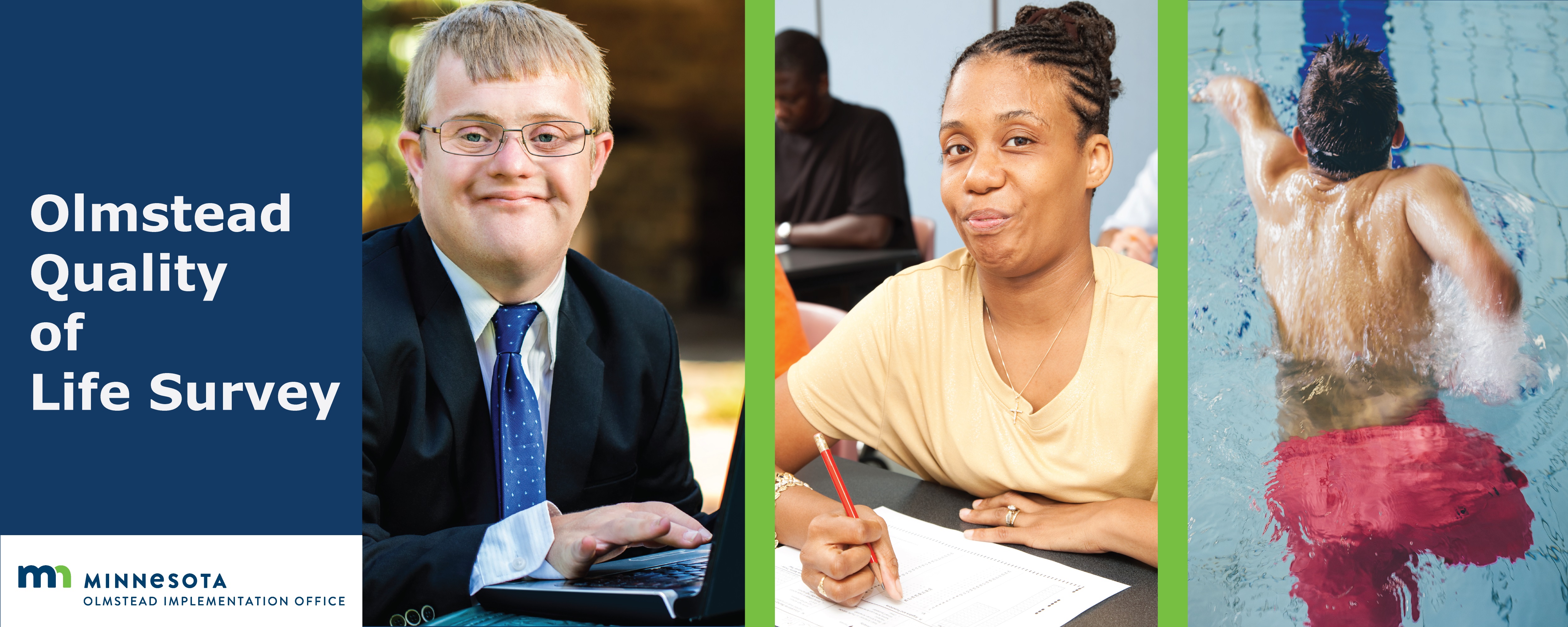
How much progress is the State of Minnesota making toward its goals of ensuring people with disabilities can live, learn, work, and enjoy life in the most integrated setting?
The Improve Group has partnered with the State of Minnesota’s Olmstead Implementation Office since 2014 to measure this effort, and recently released the first follow-up to the baseline Olmstead Quality of Life Survey. This is a longitudinal study looking at the quality of life of Minnesotans with disabilities who receive services in potentially segregated settings, meaning it’s meant to measure changes over time against a baseline. The follow-up project reconnected with a sample of the people who took the survey originally to detect any quality of life changes.
The goal of the recently released “Olmstead Quality of Life Survey: First Follow-up – 2018” is to help policymakers understand whether the State is improving the quality of life for people with disabilities as it implements the Minnesota Olmstead Plan. It’s the first chance to see if any progress was made.
“People are being placed in potentially segregated settings that may or may not be the best place for them,” The Improve Group’s Kylie Nicholas said. Kylie is a managing consultant at IG and plays a lead role on the Olmstead project. “Anything that we can do to improve the quality of life of people with disabilities and strengthen their integration into the community is going to make a richer state. Being able to give them a platform to raise up their voices is good for all of us.”
Minnesota’s Olmstead Plan was born out of the State’s response to two court cases in which people with disabilities challenged their living settings. In the 1999 civil rights case Olmstead v. L.C., the U.S. Supreme Court ruled that it’s illegal for governments to put individuals with disabilities in segregated surroundings when they can be in the community.
Described in a recent Star Tribune article as “rare and in-depth,” the follow-up project demonstrated that the survey tool is working correctly and has been consistently administered; it also identified key areas for future research. The survey, completed in 2018 and released this year, builds on the ambitious baseline 2017 survey of more than 2,000 Minnesotans with disabilities who receive services in potentially segregated settings. The Improve Group used its Community-Responsive Approachto engage Minnesotans with disabilities, including hiring survey interviewers who identified as having a disability or who have disability services experience. More than 500 people completed the follow-up survey.
The project findings remained consistent year-to-year, which is not unexpected given the short period of time between the baseline and follow-up surveys. The latest results again showed that people with disabilities in certain settings across the state are often segregated during daily activities from people who don’t have disabilities; report good quality of life, but moderate control over decisions; and have the least control over decisions regarding transportation and choosing support staff and a case manager. See the Star Tribune’s coverage of the 2017 baseline results here.
The Improve Group believes a second follow-up survey, in 2020, would be valuable to continue to monitor the State’s progress at enhancing the lives of people with disabilities. Allowing more time to elapse between surveys would boost the chance of seeing quality of life changes compared to the baseline. Previous studies have shown it takes 2-3 years for policy changes to start to impact quality of life.
With the first follow-up, The Improve Group also flagged a few questions for future research, including why people in the metro area report significantly fewer outings than those in other regions and why people with guardians expressed having less control over daily decision-making. Understanding these disparities would inform solutions or other potential service models.
“The follow-up survey in 2020 is the first opportunity we’ll have to see if the changes that Minnesota has been making with the Olmstead Plan are starting to impact people’s lives,” Kylie said. “That will really help to drive policy decisions and programmatic decisions statewide.”
